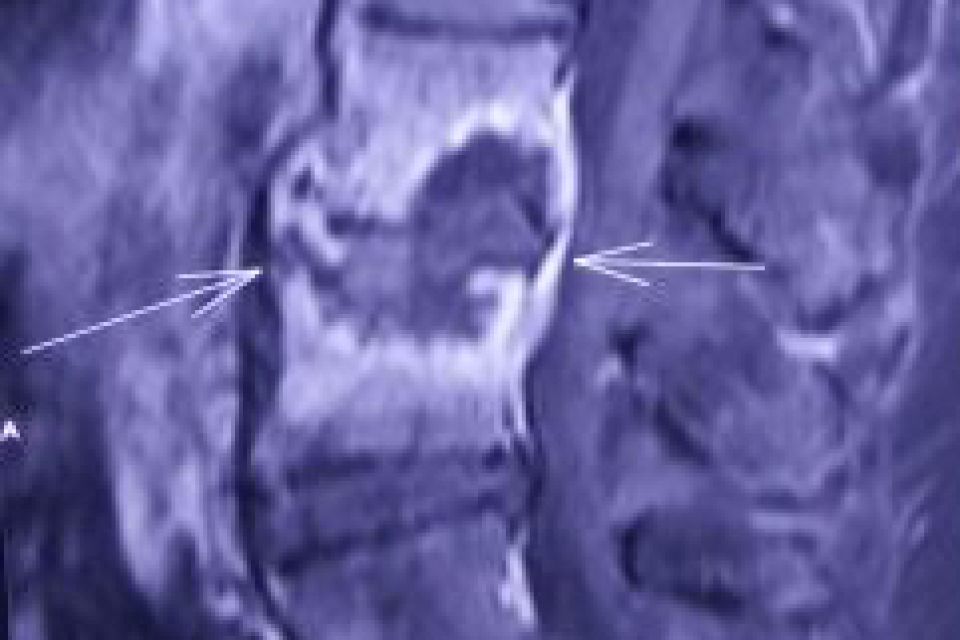Tuberculosis is widely known as a disease that affects the lungs. Tuberculosis is an infection caused by a bacteria called Mycobacterium tuberculosis. Although most commonly the lungs and bowel are affected, it can affect any organ in the body including the bones and joints .

Tubercular bacteria usually enter the body through the airway into lungs or through the gut and spread out to different areas of the body through the blood stream, spine being the most common area. They can stay dormant in the body for many years and start multiplying when the immunity goes down due to any reason. So those with reduced immunity like young kids, old age group, diabetics, those on steroid medication or other immune-suppressive medication are at a high risk of developing tuberculosis of various organs. Patients affected with HIV are also at high risk of developing tubercular infection. But it is not uncommon to see a healthy young person affected with tuberculosis of spine.
Spine is one of the very common structures affected by tuberculosis, leading to significant disability and high risk of paralysis if undetected in the early stages. As the bones in the spine get destroyed by the disease, the spine bends abnormally at the affected level and a deformity develops. There is pus formation at the affected area which can cause compression on the spinal cord and nerves in the spinal canal and lead to paralysis of limbs and loss of bowel and bladder control. Tuberculosis of spine can affect all age groups from infancy to old age. Spine tuberculosis initially causes pain in the back/neck, which gets worse on movements and while changing posture. Night pains that wake the patient up from sleep is another characteristic feature. Fever, weight loss and loss of appetite are usually associated. Weakness of limb muscles can lead to unstable gait and tendency to fall and the patient usually seeks a support to hold on to while walking.

With MRI being available widely, spinal tuberculosis is being detected at early stages now as compared to X-rays. Most of them can be cured well by anti-tubercular medication (ATT). The medication needs to be taken for a long duration (minimum of 6 months – upto 18 months). Drug resistance is a serious problem needing second line medicines and is more difficult to treat. There are special tests like Gene Xpert available now to detect multiple drug resistant tuberculosis.
In some patients with deformity in spine or those with spinal cord compression causing paralysis, surgery to stabilise the spine and decompress the spinal cord/nerves is required. Surgical treatment in right time can prevent spinal deformity/paralysis and help in faster and better recovery of muscle power in those who have developed paralysis.

So, any persistent back pain needs an evaluation by a Spine physician. Feel free to ask your queries here for any further information.

With years of experience in spine surgery, Dr Phani Kiran S, Senior Consultant Spine Surgeon will assess you and suggest the treatment option that is right for you.
We at Medspine clinics, understand the importance of educating all our patients about the spinal problems and the most effective ways to take care of their spine.
The Ortho Clinic: Monday, Wednesday, Friday, Saturday.
Ojas Health: Tuesday, Thursday
© Copyright 2024 MedSpine. All Rights Reserved. Build with 🤍 by Digital GYB
WhatsApp us